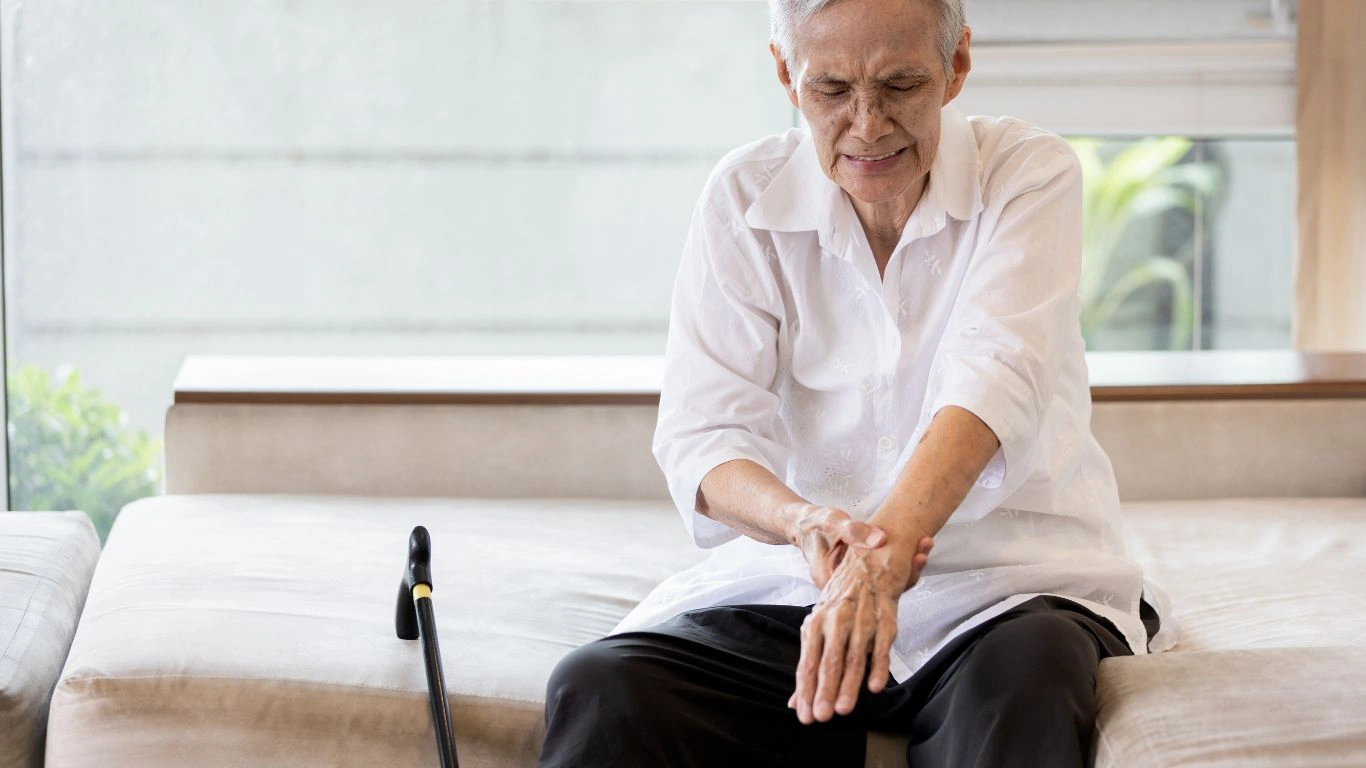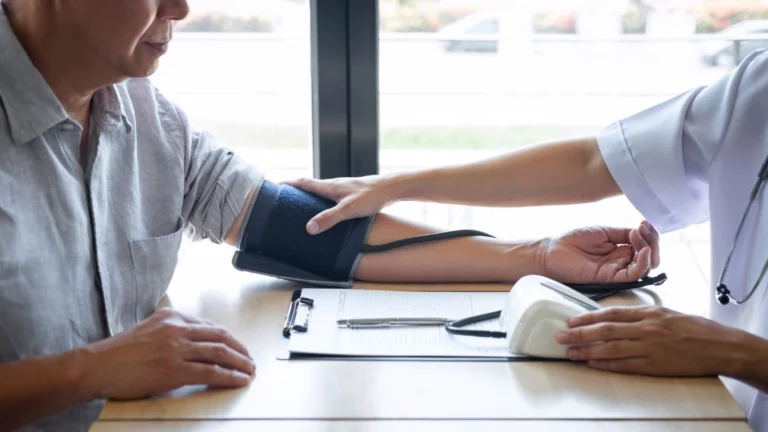“Overcoming Sedentary Lifestyle in Rheumatoid Arthritis”
As a Rheumatology Nurse Practitioner, I’ve had the privilege of working closely with patients diagnosed with rheumatoid arthritis (RA). One of the most common challenges I see, and one that is often overlooked, is the relationship between a sedentary lifestyle and the progression of RA symptoms. Rheumatoid arthritis is a chronic autoimmune condition that primarily targets the joints, leading to inflammation, pain, and stiffness. But what many don’t realize is that a sedentary lifestyle can significantly worsen the impact of this condition. It’s a vicious cycle—RA can make it harder to stay active, but inactivity, in turn, exacerbates the symptoms. In this article, I’ll dive into why movement matters so much for those living with RA and offer tips on how to break the cycle of inactivity.
The Role of Physical Activity in Rheumatoid Arthritis Management
When it comes to managing rheumatoid arthritis, staying active might seem like a daunting task. I’ve worked with many patients who experience debilitating joint pain and fatigue that make even the thought of moving feel overwhelming. However, I can’t stress enough how important regular physical activity is for managing RA symptoms and maintaining long-term joint function.
Incorporating movement into your daily routine can significantly improve joint mobility, reduce inflammation, and ease pain. I’ve seen firsthand how patients who engage in consistent, low-impact exercise report feeling better overall, with less stiffness and more energy. While every individual’s experience with RA is unique, regular movement helps most people maintain or improve their quality of life.
How Sedentary Lifestyles Make RA Worse
For those with rheumatoid arthritis, it’s all too easy to fall into the trap of a sedentary lifestyle. The pain and fatigue that often accompany RA can discourage movement, leading to a vicious cycle of inactivity. But did you know that being sedentary can actually make your symptoms worse? Lack of movement can lead to muscle atrophy, joint stiffness, and decreased flexibility, all of which contribute to the progression of RA.
When we stay still for long periods, the body becomes stiffer. For individuals with RA, this can make the pain even more intense. I often remind my patients that while rest is important, especially during flare-ups, too much rest can ultimately cause more harm than good. Muscles can weaken, and joints can become more prone to inflammation and deformity if they’re not used regularly.
The Benefits of Staying Active with Rheumatoid Arthritis
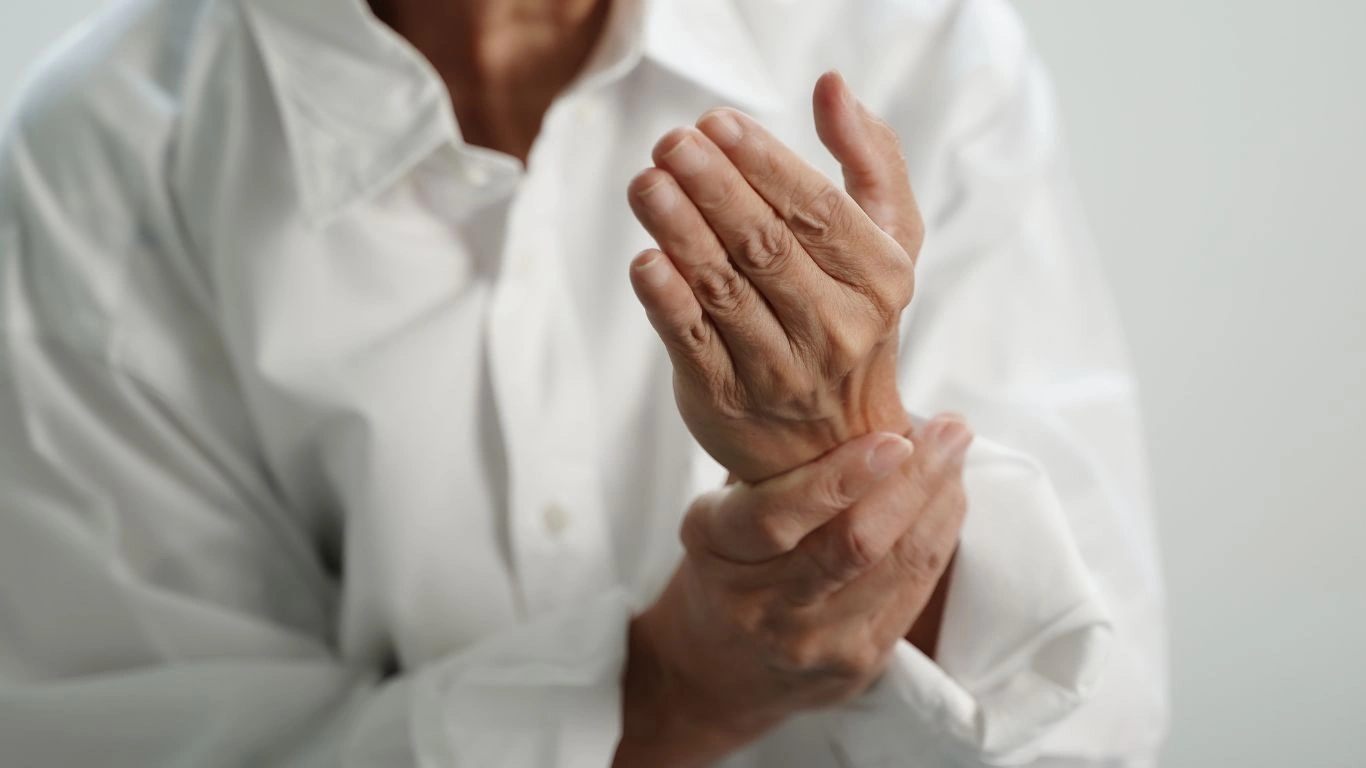
Even if you’re dealing with painful joints, you can still benefit from staying active. The key is finding the right balance and engaging in exercises that are gentle on the joints while still promoting movement. Let’s look at some of the key benefits of staying active despite RA:
- Improved Joint Mobility: Regular movement helps prevent stiffness and maintains flexibility in the joints, which is crucial for people with RA. This can improve your ability to perform everyday tasks like walking or climbing stairs.
- Increased Strength: Strengthening the muscles around your joints can help protect them from further damage. Stronger muscles can absorb shock and reduce the strain placed on the joints.
- Better Sleep: Exercise can help reduce pain and stiffness, leading to better rest at night. And we all know how essential sleep is for managing chronic conditions like RA.
- Reduced Inflammation: Studies have shown that moderate physical activity can reduce systemic inflammation, which is one of the hallmarks of RA.
As a nurse practitioner, I always encourage my patients to be mindful of their bodies. Everyone’s pain threshold is different, so it’s essential to listen to your body and adjust your activity level accordingly. Some days, light stretching or a gentle walk may be enough, while other days, a longer exercise session might feel great. The most important thing is consistency—small amounts of movement throughout the day can make a world of difference over time.
Breaking the Sedentary Cycle
One of the toughest challenges I see in my practice is how easy it is to slip into a sedentary routine. As the pain and fatigue of RA set in, it becomes all too tempting to spend the day lounging or resting. But as we discussed, this can lead to more pain, less flexibility, and a general decline in health.
So, how do we break that cycle? Start small. Even just five minutes of movement a few times a day can help. Here are some strategies I often suggest to my patients:
- Set Realistic Goals: Don’t try to do too much at once. Set small, achievable goals that you can build on over time. For example, aim for 10 minutes of movement a day and gradually increase it.
- Incorporate Movement into Daily Tasks: You don’t have to carve out special time for exercise. Simple actions like taking the stairs instead of the elevator, walking around while you’re on the phone, or doing a few gentle stretches during commercial breaks can add up.
- Find Activities You Enjoy: Physical activity shouldn’t feel like a chore. Whether it’s dancing, swimming, or a gentle yoga class, find something that makes you feel good. The more fun the activity, the more likely you’ll stick with it!
- Track Your Progress: Keep a journal or use an app to track your physical activity. Noticing even small improvements can motivate you to stay consistent.
The Importance of Support

Sometimes, it’s easy to feel isolated when you’re living with RA. Joint pain, stiffness, and fatigue can make it tough to engage with others or stay motivated. That’s why finding support—whether through family, friends, or an online community—can be incredibly helpful.
In my practice, I’ve seen patients thrive when they have a support system in place. It’s not just about having someone to help with daily tasks—it’s about having people who encourage you to stay active and keep you accountable. Whether it’s a workout buddy or a support group, finding a circle of people who understand your challenges and cheer you on can make all the difference.
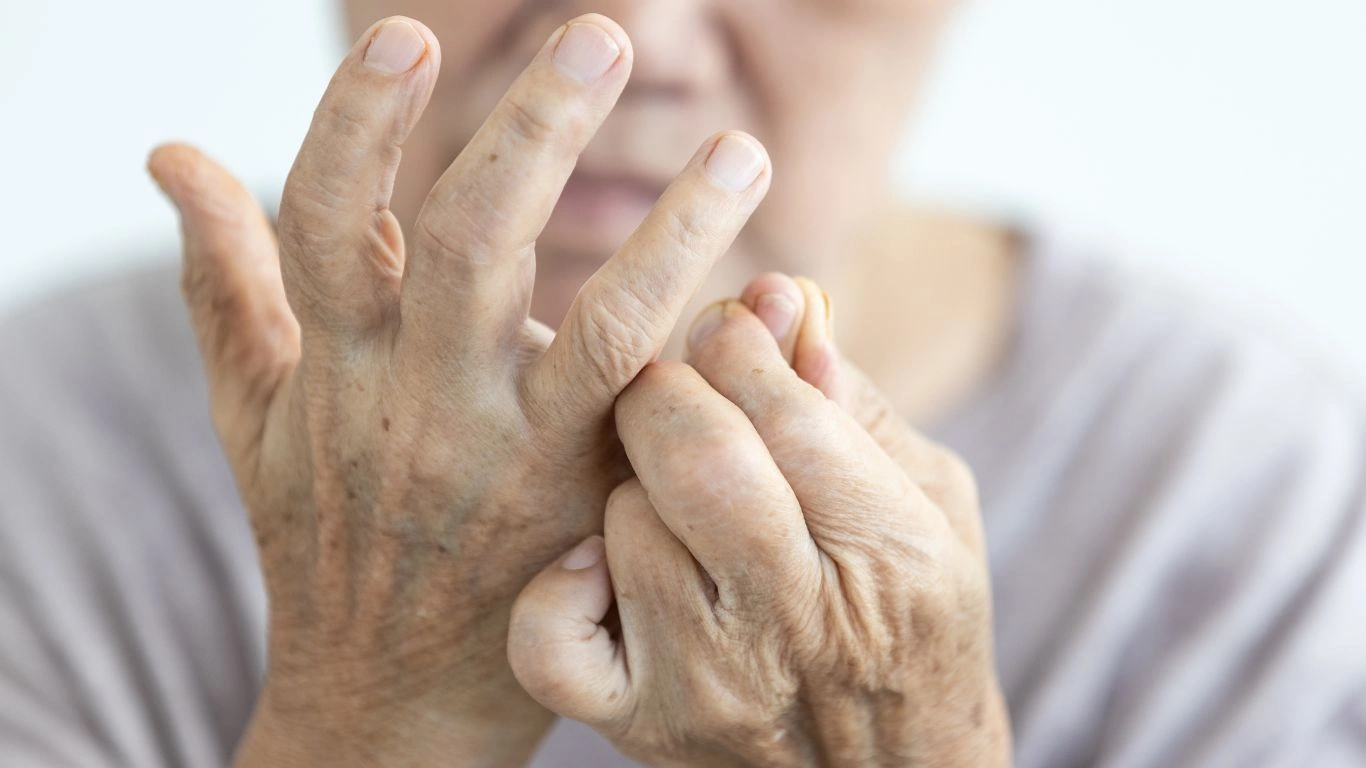
Finding the Right Type of Exercise for RA

One of the most common questions I get from patients is, “What type of exercise should I do with rheumatoid arthritis?” And that’s a great question. The answer is not one-size-fits-all. The right exercise depends on the severity of your RA, your current fitness level, and what your body can handle on any given day. Over the years, I’ve worked with many patients to figure out what works best for them, and here’s what I’ve found: low-impact, gentle exercises are usually the safest and most effective. These types of exercises help keep the joints moving without causing undue strain or risk of injury.
Low-Impact Activities for RA
Low-impact activities are ideal because they don’t put excessive pressure on the joints. Think of them as the friendly exercises that work with your body, not against it. Some great low-impact options I suggest to my patients include:
- Walking: Yes, the simple act of walking can do wonders! It’s easy, accessible, and doesn’t require any special equipment. Walking at a moderate pace can improve circulation, reduce stiffness, and even help with weight management—important for people with RA.
- Swimming: Water exercise is fantastic because the buoyancy of the water supports your body, relieving stress on your joints. Swimming or water aerobics can help increase flexibility and muscle strength without the risk of overloading your joints.
- Cycling: Whether on a stationary bike or outdoors, cycling is another excellent option. It’s gentle on the knees and hips, and it provides an effective cardiovascular workout while strengthening the muscles that support your joints.
- Yoga: Yoga offers a combination of stretching, strengthening, and breathing techniques. It’s a wonderful way to relieve stress and increase flexibility while staying gentle on the body. Plus, it’s an excellent way to improve mental health, something that’s incredibly important when managing a chronic condition like RA.
These activities can help maintain joint mobility and strength without adding unnecessary strain. I’ve had patients tell me that after just a few weeks of regular swimming or walking, they felt less stiff, had more energy, and even noticed less pain during flare-ups. It’s all about starting slow and gradually increasing intensity. The key is consistency.
How to Overcome the Mental Hurdles of Exercising with RA
Now, let’s be honest—getting up and moving when you’re in pain isn’t always easy. I get it. As someone who’s spent years working with RA patients, I’ve seen the mental and emotional toll this disease can take. But here’s the thing: Your mind plays a huge role in how you experience your symptoms. It’s easy to get stuck in a mindset where you think that doing anything physical will just make the pain worse, but that’s often not the case. Movement can actually help to improve your outlook and reduce pain in the long run.
One thing I always encourage is a positive, patient approach to exercise. You don’t have to feel pressured to push through the pain or aim for a certain performance level. It’s more about doing what you can and celebrating those small victories. If you manage to walk for 10 minutes without discomfort, that’s something to feel proud of. If you stretch for 15 minutes and notice less tightness, that’s a win.
Overcoming Exercise Anxiety
Many people with RA experience something I call “exercise anxiety.” They worry that pushing their body too hard will make their symptoms worse, or they’re concerned about injuring themselves. This is completely understandable, but it’s important to remind yourself that movement doesn’t have to be intense to be beneficial. Low-impact exercise, done regularly, will likely not cause the pain to worsen. In fact, it might be the key to managing flare-ups and improving overall function.
Here are a few ways to help overcome the mental barriers to exercise:
- Start Slow: If you’re feeling overwhelmed, begin with a short, gentle walk or light stretching. You can always build up to more as your body adjusts.
- Set Realistic Expectations: Understand that not every day will be the same. Some days may be harder than others, and that’s okay. The goal is to stay consistent and find movement that feels good on any given day.
- Celebrate Progress: Every time you engage in physical activity, whether it’s a quick stretch or a 20-minute walk, celebrate it! This will help build momentum and motivate you to keep going.
- Get Support: If you’re feeling anxious about exercising on your own, consider finding a workout buddy or joining a group exercise class specifically designed for people with arthritis. Having a supportive community can make all the difference.
The Connection Between RA, Weight Management, and Exercise

Another key piece of the puzzle is weight management. If you’ve been living with rheumatoid arthritis for a while, you know how important it is to manage not only the inflammation in your joints but also your overall health. One of the biggest benefits of staying active is that it can help you maintain a healthy weight, which is crucial for reducing the strain on your joints.
Excess weight, especially around the knees, hips, and spine, can increase joint pain and contribute to more severe symptoms of RA. By keeping active and incorporating exercises that focus on strength and flexibility, you’ll be helping not only your joints but your overall health as well. I’ve had patients who’ve lost weight through consistent exercise and noticed a significant improvement in their joint pain. The reduction in pressure on the joints can make a huge difference, allowing you to move more freely and comfortably.
Incorporating Strength Training
Strength training is another important component of a well-rounded exercise plan. Don’t be intimidated by the idea of lifting weights. You don’t need to go heavy—light weights or resistance bands can be just as effective in helping to build muscle strength, which can take the pressure off your joints.
Strength training helps increase muscle mass, which provides better support for your joints. It also boosts your metabolism, improves bone density, and enhances your overall stamina. Just be sure to start slow and choose exercises that work for you. Some great strength-training options include squats, lunges, and upper body exercises using resistance bands or light dumbbells. I always encourage my patients to work with a physical therapist or certified trainer if they’re new to strength training, as they can provide guidance on proper form to prevent injury.
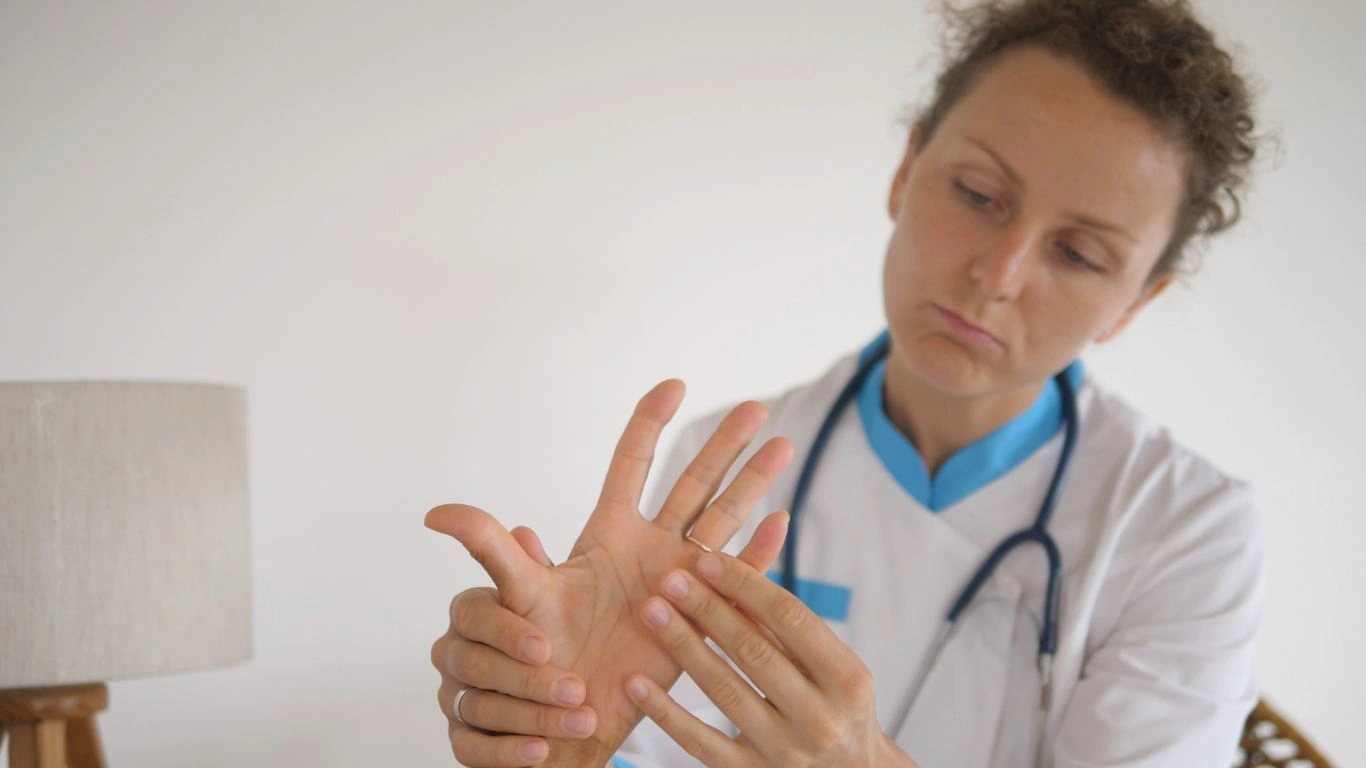
Exercise and Its Effect on Mental Health in RA
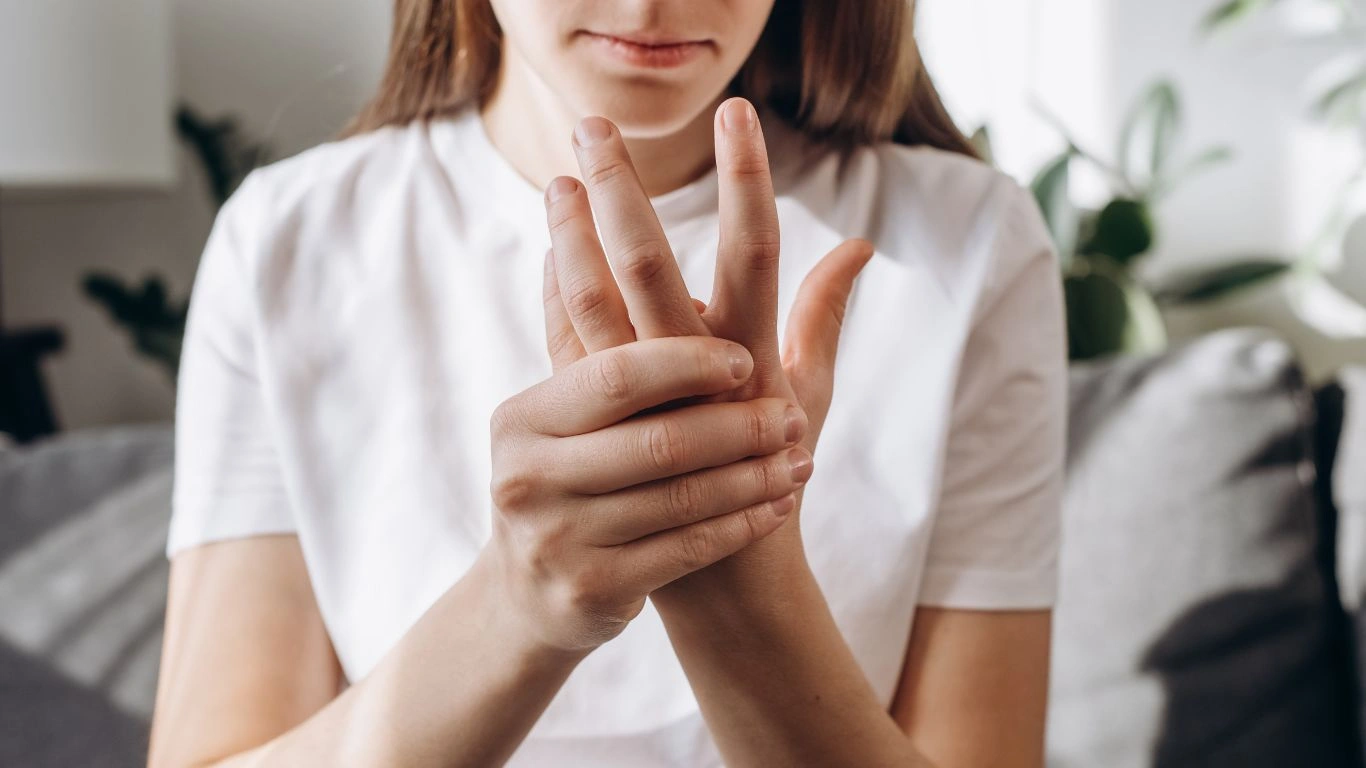
Living with rheumatoid arthritis is tough—not just physically, but mentally as well. Over the years, I’ve had countless conversations with patients about how their RA impacts their mood and mental health. The constant pain, fatigue, and unpredictability of flare-ups can lead to feelings of frustration, anxiety, and even depression. This is why exercise is so critical, not only for physical health but also for emotional well-being. It’s a double benefit—while your body is getting stronger, your mind is getting the boost it needs, too.
Exercise is one of the most effective ways to fight off the mental health challenges that often accompany chronic illness. I’ve seen patients who were initially reluctant to exercise tell me how much better they felt after incorporating movement into their routines. Whether it’s a simple walk, a calming yoga session, or a light strength workout, physical activity releases endorphins—the body’s natural mood boosters. And trust me, those endorphins can work wonders for easing stress and lifting your spirits.
The Mind-Body Connection
What I find fascinating is how tightly connected our mental state is to our physical health. When you’re dealing with the constant pain of RA, it’s easy to slip into a negative mindset. This negativity can sometimes make the pain feel even worse. On the flip side, when you engage in physical activity, it can help break that cycle of pain and frustration. By being physically active, you’re not just helping your joints—you’re giving your mental health a much-needed boost.
Many patients have shared with me how exercise helps them manage their anxiety and depression, making it easier to cope with RA’s daily challenges. Exercise can give you a sense of control over your body, helping to fight the helplessness that sometimes accompanies chronic conditions. It also improves sleep, and let’s face it, getting better sleep is essential when dealing with RA, as it helps manage pain and fatigue.
When RA Flare-Ups Happen: Adjusting Your Exercise Routine
Let’s face it—RA isn’t something that stays on the sidelines. It can flare up when you least expect it. I always tell my patients to listen to their bodies and not push themselves too hard during flare-ups. It’s important to acknowledge when your body is telling you to rest, but that doesn’t mean you should stop moving altogether. The key is modifying your routine based on how you’re feeling.
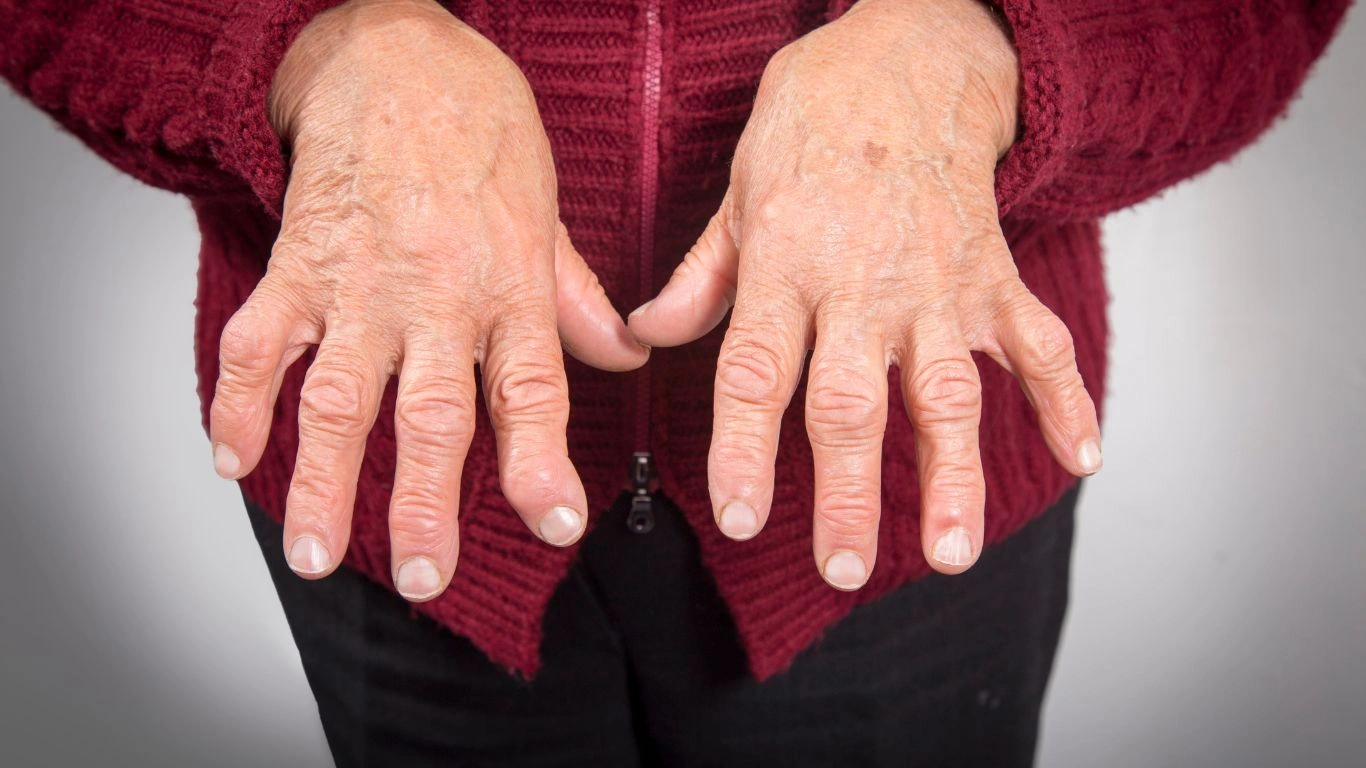
During a flare-up, it’s normal to feel more pain and stiffness, and this might make you want to stay in bed all day. But I’ve found that even just a small amount of movement—like gentle stretching or a brief walk around the house—can help reduce pain and prevent the joints from becoming even stiffer. I know it can be difficult, but moving through the pain, within reason, helps your body maintain its flexibility and strength.
Modifying Your Exercise Plan for Flare-Ups
If you’re in the midst of a flare-up, it’s important to modify your exercise routine rather than completely abandoning it. Here are some tips I recommend:
- Focus on Gentle Stretching: Stretching can help alleviate tightness and improve flexibility without putting too much strain on your joints. It can also help ease muscle stiffness caused by the flare-up.
- Shorten Your Exercise Sessions: If you normally work out for 30 minutes, reduce that time to 10-15 minutes during a flare-up. This can prevent overexertion and still give you the benefits of movement.
- Water-Based Exercises: Swimming or water aerobics is ideal during flare-ups. The buoyancy of water supports your body, allowing you to move without putting stress on your joints.
- Take Frequent Breaks: If you’re doing a workout, take frequent breaks to rest and monitor how you’re feeling. Don’t feel pressured to complete a full session if it’s causing discomfort.
Remember, the goal is to stay as active as you can during a flare-up, but to always listen to your body and adjust accordingly. The less you move during a flare, the more likely your joints are to become stiff and painful, which could prolong the flare-up itself.
The Importance of Professional Guidance in Your Exercise Routine
Before starting or modifying any exercise routine, I always suggest consulting with your doctor or a physical therapist. A healthcare professional can help you design a personalized exercise plan tailored to your specific needs, taking into account your RA symptoms and current fitness level. I’ve worked with many physical therapists who specialize in rheumatoid arthritis, and they are incredibly helpful in ensuring that movements are safe and effective. They can teach you proper techniques to avoid injury and can help you understand what types of exercises will benefit your specific joints the most.
As a nurse practitioner, I always remind my patients that exercise isn’t a one-size-fits-all solution. What works for one person might not work for another, so it’s essential to tailor your fitness plan to your body’s needs. I always encourage patients to start slow and gradually increase their intensity as they build strength and confidence. If something doesn’t feel right, don’t hesitate to reach out to a professional for guidance. The more informed you are, the better your chances of finding the right balance of movement that works for you.
Support Resources and Communities
Managing rheumatoid arthritis is a lifelong journey, and it can feel overwhelming at times. But there’s no need to go it alone. There are plenty of resources and support communities available to help you on your path to better health. Whether it’s online forums, local support groups, or social media groups dedicated to RA, connecting with others who understand what you’re going through can be incredibly comforting and motivating.
Joining a community of people who share similar experiences can provide encouragement and practical tips for managing RA through exercise and other lifestyle changes. Some people even find exercise groups specifically for those with RA, where they can work out in a supportive environment designed to meet their needs.
Remember, you are not alone in this. There’s a world of support and information out there to help you thrive with rheumatoid arthritis.
References
For more information on managing rheumatoid arthritis, visit reputable resources like The American College of Rheumatology and The Arthritis Foundation for research-based advice and tips for living with RA.
Disclaimer
This article is for informational purposes only and is not intended to replace professional medical advice. Always consult your healthcare provider before starting any new exercise program, particularly if you have a chronic condition like rheumatoid arthritis.

Tarra Nugroho is a dedicated Nurse Practitioner with a strong foundation in family and preventive care. She brings both compassion and clinical expertise to her practice, focusing on patient-centered care and health education. As a contributor to Healthusias.com, Tarra translates medical knowledge into clear, empowering articles on topics like women’s health, chronic disease management, and lifestyle medicine. Her mission is simple: help people feel seen, heard, and informed—both in the clinic and through the content she creates. When she’s not caring for patients, Tarra enjoys weekend hikes, plant-based cooking, and curling up with a good health podcast.
